Frequently Asked Questions >> How could the light poles and taxi cab scene have been staged in broad daylight?
There would have been two steps involved in staging the light poles. The first is the removal of the poles. The second is the planting of the poles in the proper location so as to make them appear to have been knocked down by the plane.
Regarding the removal of the poles, there is no reason that this had to have been done in broad daylight as opposed to the middle of the night. And, even if it was done during the day, there is no reason that anyone would have noticed if these poles had been removed under the cover of normal road maintenance.
Regarding the planting of the poles, there is no reason to believe that this was done in broad daylight either. On 9/11, four out of the five light poles were in fairly to highly inconspicuous locations. Pole 2 was almost completely hidden. Poles 4 and 5 were concealed on embankments on Pentagon property and behind guardrails. Pole 3 was in the grass next to an exit ramp on Pentagon property.
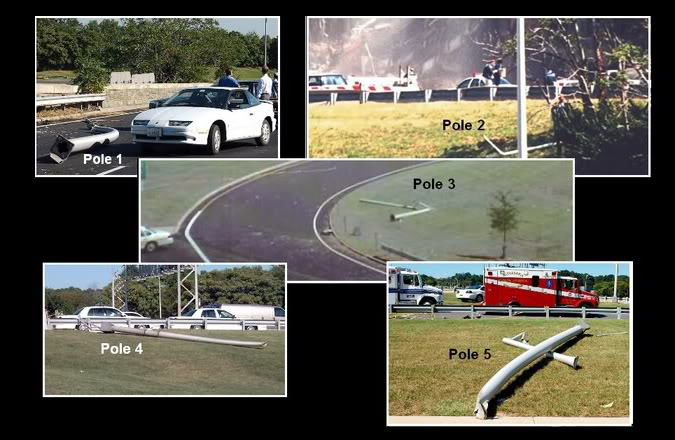
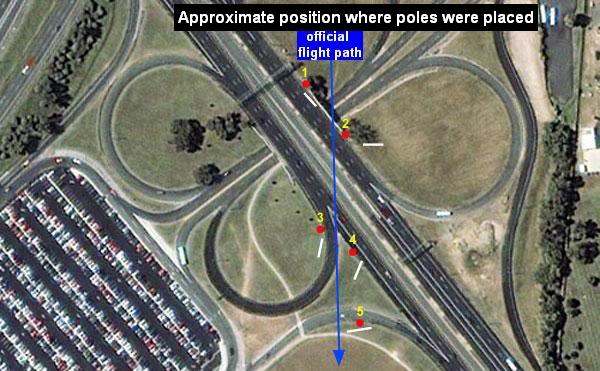
All four of these poles (numbers 2 through 5) could have easily been placed there in advance in the middle of the night on the eve of the event.
Please remember that the area in which these light poles were photographed on the ground on 9/11 is the literal backyard of the suspect and one of the most highly secured (government-controlled) areas in the nation.
Moreover, the entire scene is right by the heliport, where the President travels to and from quite often.
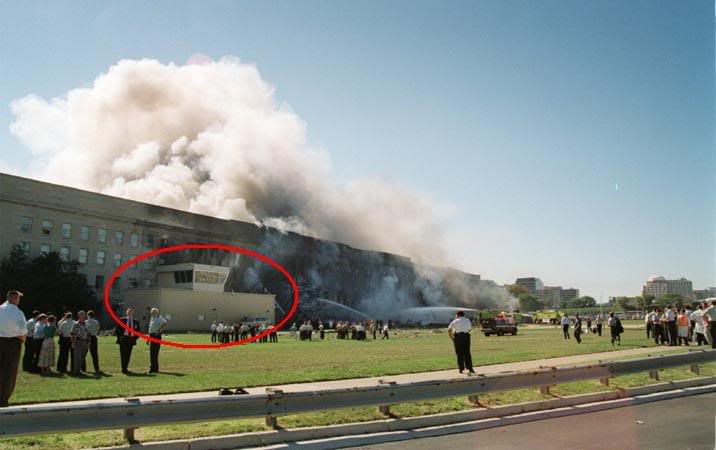
In fact, the President had departed from there the day before and was scheduled to land back at the heliport on the afternoon of 9/11/01!
Heliport firefighter Allan Wallace:
Our first helicopter flight was around 10 AM. But we were expecting President George W. Bush to land in Marine One around 12 Noon, returning from Jacksonville, Florida. (He had actually left from the Pentagon the day before.) Needless to say, neither flight arrived at the Pentagon that day because of the terrorist attacks.
Sean Boger, an air traffic controller who was in the heliport tower on 9/11, told the Center for Military History:
On September 10th, it was kind of busy because the President flew out. He flew out that Monday, and whenever the President flies out, it is always a dog and pony show, you know. You have got the Secret Service guys coming around and the dogs sniffing, and everything. So it was kind of like a big old deal. And so on September 10th, you know it was really kind of busy. And he was scheduled to come back on September 11th. So we know it was going to be another dog and pony show, but we didn't think it was going to happen that soon.
This means that complicit officials had a perfect pretext ("securing the area for the president") under which the stage could be set.
Even Pole 1, which Lloyde England claims speared the windshield of his taxi (a physically impossible claim which is not corroborated by a single other eyewitness or any photograph, and which is proven false by the north side approach evidence anyway), could have been pre-positioned in advance, hidden off to the side of the road or on the wide guardrail median separating the carpool lane, waiting to be dragged out to its final resting spot next to the cab for the photo ops immediately after the explosion on 9/11 while everyone was watching the Pentagon burn.
In fact, the visible scratch on the road where the pole was dragged is physical evidence that this is exactly what happened. (Click image to open full-size, high-res version)
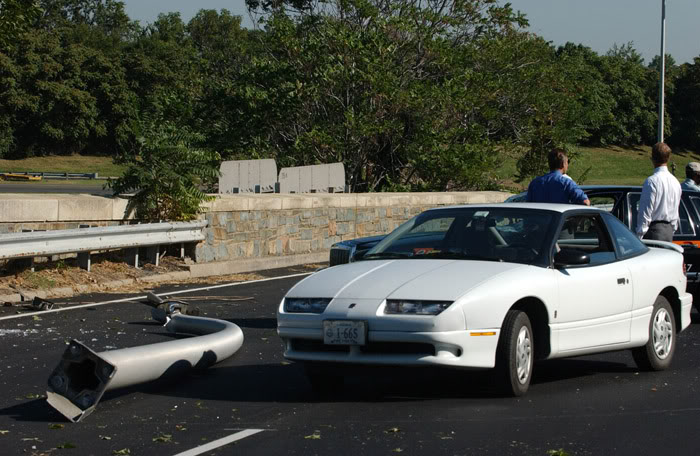
Additionally, there is evidence that authorities had already blocked off southbound traffic on Route 27, where Lloyde's cab was photographed, shortly after the explosion (and possibly even just before), giving themselves complete control over the scene.
Jerri Davis was completely stopped in traffic talking on her cell phone in the northbound HOV lane of Route 27 in front of the Pentagon when the plane flew by. She was just far enough north that she did not see the plane, which was gone by the time she turned after hearing the huge explosion to the right. After getting out of her car and walking into the grass to observe the scene for a few minutes, Jerri then got back in her car and began to make her way out of there. Traffic was moving pretty slowly because they had to snake through a number of stopped vehicles, so once Jerri reached the point just beyond the median she made a U-Turn and headed back down Route 27 southbound.
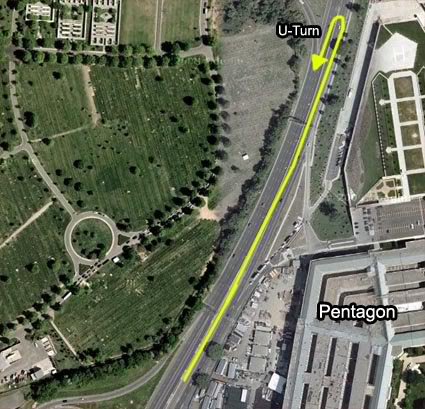
Jerri told us that as she got back down near the Pentagon she noticed a man up ahead who was waving his hands and trying to flag her down to stop. She said there was no way on Earth that she was going to stop, so she got off at the Columbia Pike exit instead.
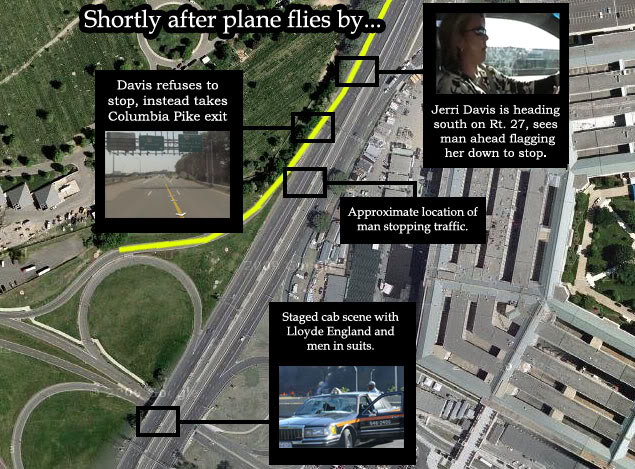
In fact, Steve Riskus was already heading south on Route 27 minutes earlier when the alleged impact (flyover) took place. He quickly got out his camera and began snapping photos. He says that he did this "less than one minutes [sic]" after the alleged impact. He was located before the Columbia Pike exit at that time, and as you can see, just like Jerri Davis, he promptly exited Route 27 there.
Here are his first three photos:
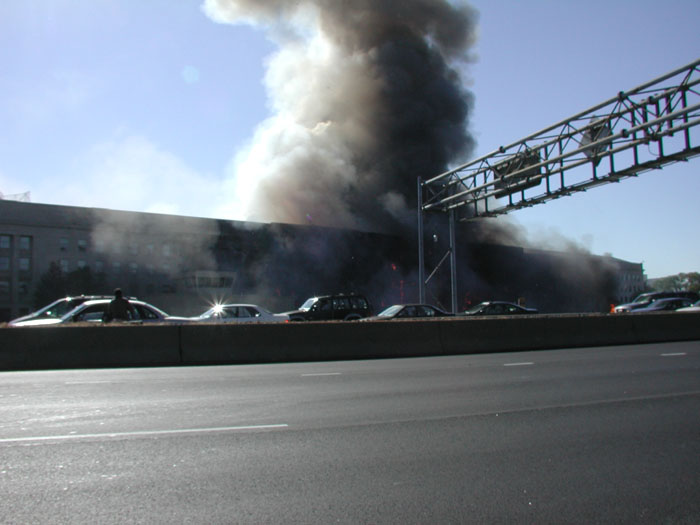
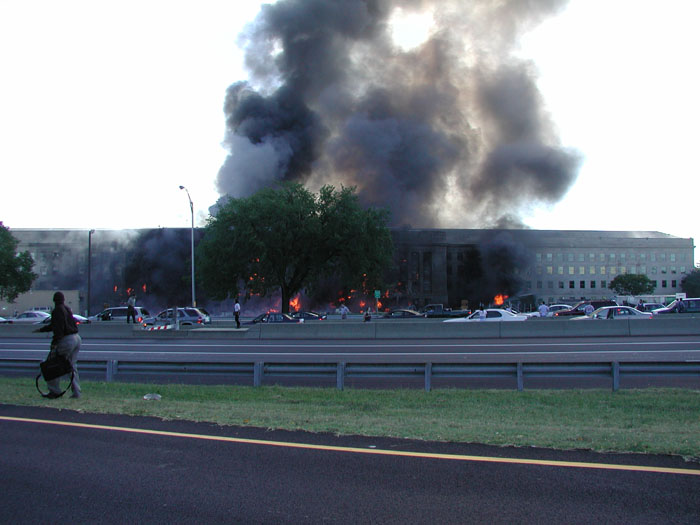
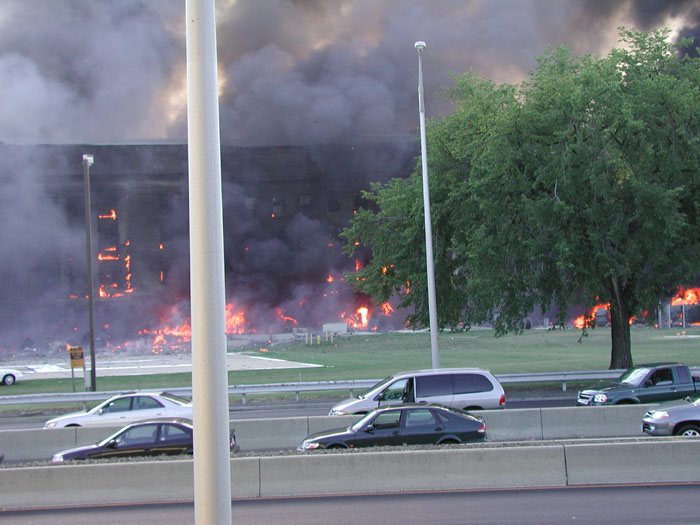
As you can see there was already a distinct lack of cars in the southbound lanes, in stark contrast to the heavy traffic in the northbound lanes.
In the following images, taken by photographer Jason Ingersoll within 17 minutes or less of the event, you can also see a lack of southbound traffic. Meanwhile, Lloyde is seen surrounded by a handful of men in suits. It is also apparent that cars on the other side of the highway going northbound had their view of the scene obstructed by the two sets of guardrails on the already-closed HOV lane. (Click an image to open full-size, high-res version)
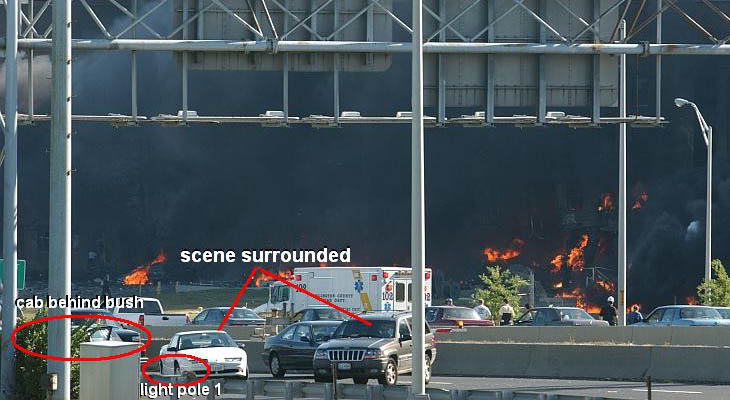
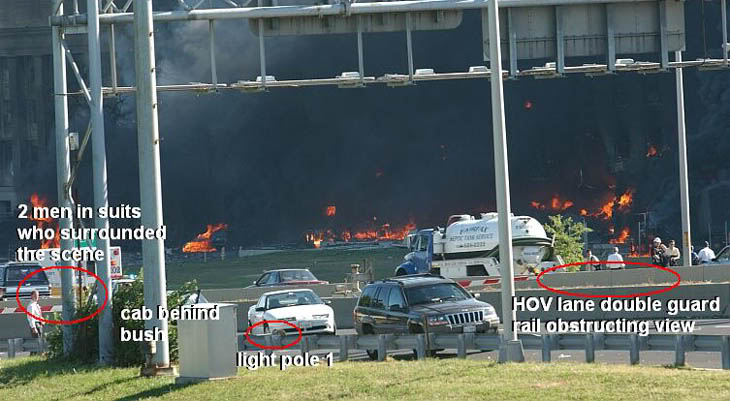
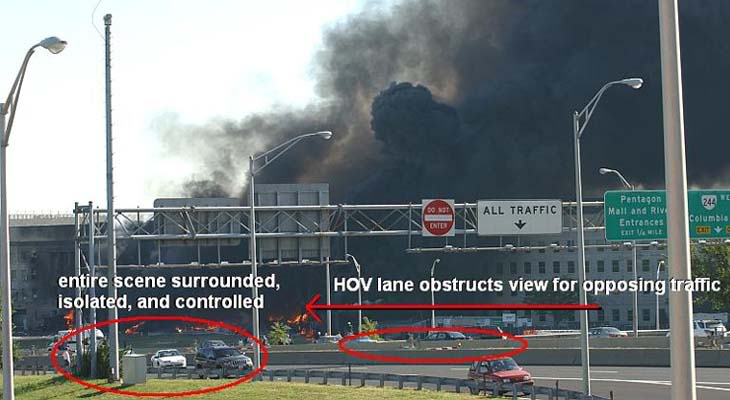
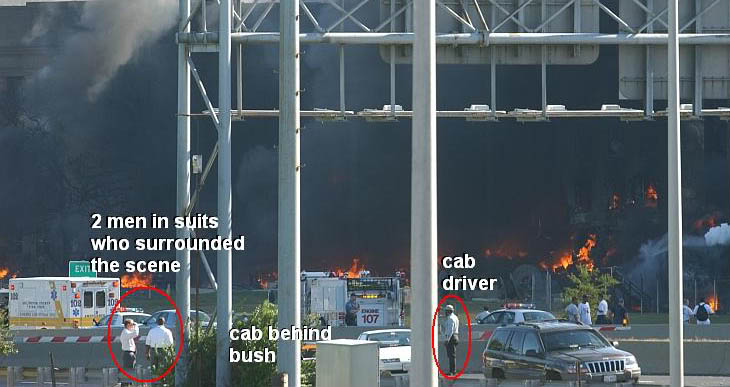
This individual with the red tie, who looks to be the same individual that was was photographed in the brown Jeep Cherokee moments earlier, was a central figure in this scene. His access, noticeably calm demeanor, and apparent authority suggest that he is a federal agent.
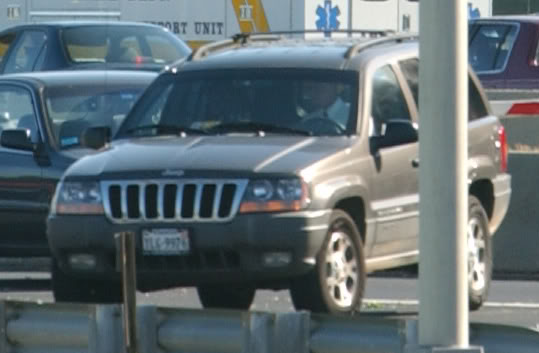
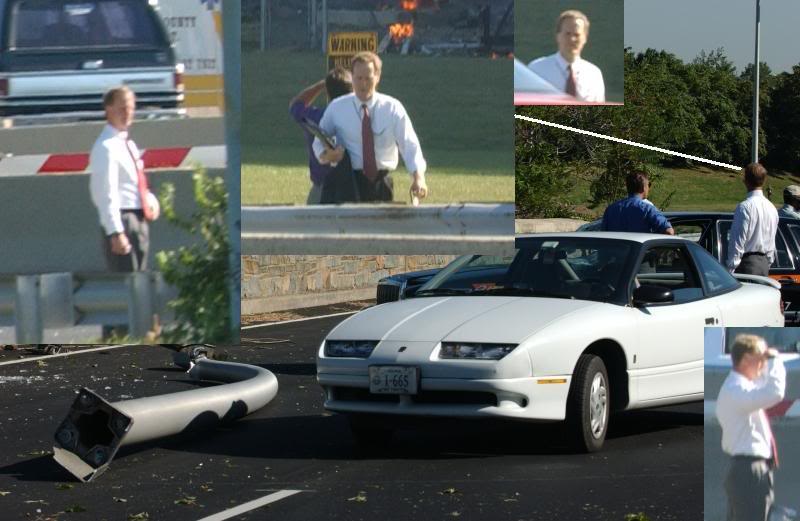
Here is another image, taken after the fire had been largely extinguished, showing how the view of the scene from the northbound lane was obstructed by the two sets of guardrails on the already-closed HOV lane.
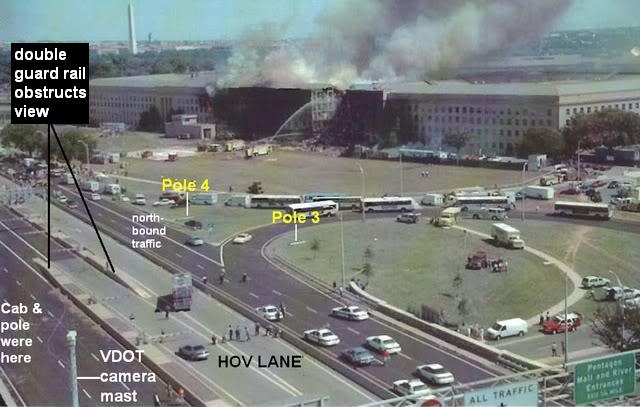
All in all the scene would have been quite easy to control, especially considering that people would have been much more fixated on the burning Pentagon.
Related:
- CIT Forum: Light pole on highway near the Pentagon goes unnoticed for years
- FAQ: Since the plane did not hit the light poles do you think that they were somehow knocked down in real-time as the plane passed by? Maybe with explosives, or by the vortex of the plane or a missile or something?
- Allan Wallace, "A Firefighter's Story." The article was written by Wallace on August 5, 2002 and published by First Due News, the "official magazine of the Ohio Association of Professional Fire Fighters" on OAPFF.com some time between Oct 2002 and April 2003. [backup copies: archive.org, original].
- CMH Interview with Sean Boger, November 14, 2001, CMH Catalogue Number NEIT-299.
- High resolution copies of the full set of images that Riskus published can be viewed in their original context at www.criticalthrash.com/terror/crashthumbnails.html